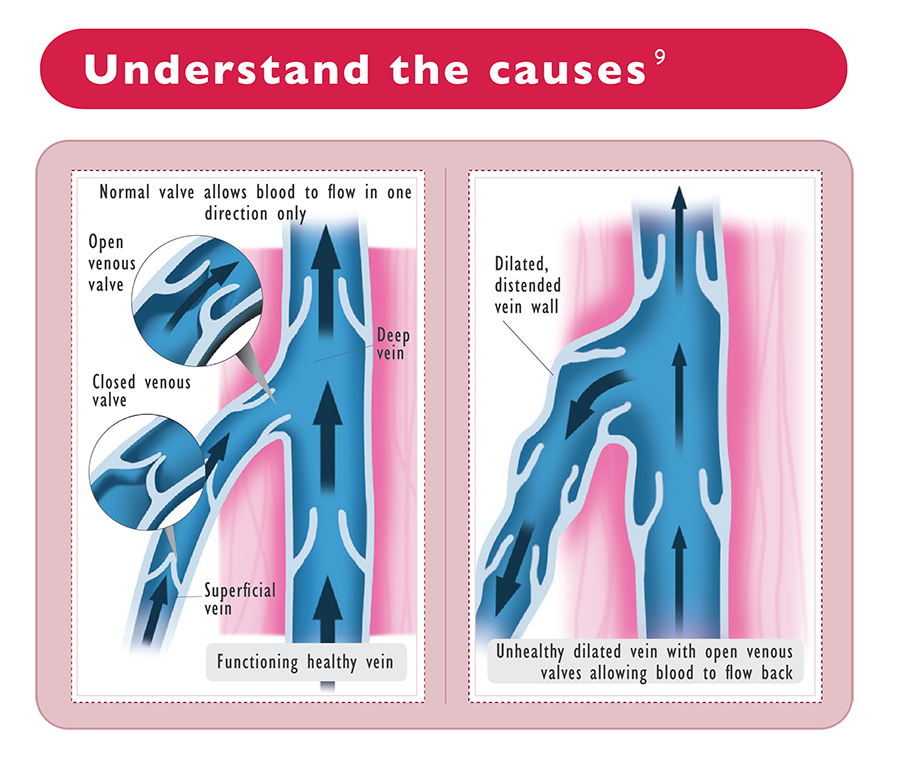The following symptoms are a warning sign of the onset of a condition called chronic venous insufficiency (CVI Syndrome).
This occurs when veins weaken and lose their ability to conduct blood effectively6.
- painful and tired legs (after long periods of standing or sitting)6
- heavy and swollen legs (especially in the evening)6
- tension and tingling in the legs6
- itching and hardening of the skin6
With the onset of vein disease, veins become dilated and the venous valves, responsible for the blood-flow to the heart, no longer close properly. In many cases the venous valves remain open and the blood accumulates in the dilated vein. As a result, the blood flows back into the vein and pools in the leg tissue, causing swelling.6
Through the increased pressure, the veins become
permeable and the fluid passes out into the surrounding
tissue. This results in the accumulation of fluid, so
called oedema. The increased amount of fluid in the
tissues of the legs causes pain and swelling and this can
cause further damage to the veins.6

• Age
Problems may appear early, but increase with age6.
• Gender
Women are affected more often because of pregnancy (hormonal changes, foetal pressure) and due to taking hormonal contraception6.
• Daily lifestyles
Problems may appear following long periods of sitting or standing, especially close to sources of heat, lifting heavy objects or kneeling for long periods6.
• Poor diet
Poor dietary habits can lead to constipation which increases the abdominal and venous pressure6.


